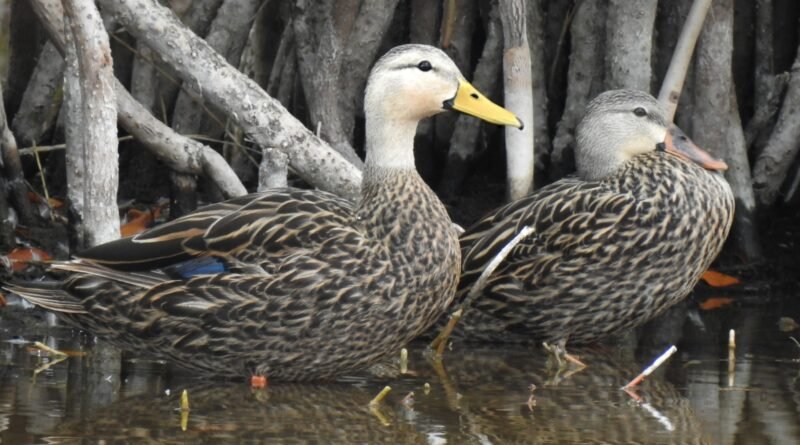A Detailed Exploration of How Birds Mate
I. Introduction
A. Overview of Avian Reproduction
Bird reproduction is a fascinating and essential aspect of avian biology, vital for the continuation of species. It involves a series of complex behaviors and interactions that culminate in the formation of offspring.
B. Importance of Understanding Bird Mating Behavior
Understanding how birds mate is crucial for gaining insights into their reproductive strategies, population dynamics, and evolutionary adaptations. It also plays a significant role in informing conservation efforts and wildlife management strategies.
C. Unique Aspects of Avian Mating Bird mating behavior is diverse and can vary greatly among species. From intricate courtship displays to cooperative breeding arrangements, birds employ a wide range of strategies to ensure reproductive success.
II. Courtship Displays and Rituals
A. Vocalizations and Calls Birds use vocalizations, such as songs and calls, to attract mates and establish territory. These vocalizations serve as important communication tools during courtship, allowing individuals to advertise their presence and fitness to potential mates.
B. Visual Displays: Plumage and Posturing Elaborate plumage and intricate posturing are common in bird courtship displays. Bright colors, intricate patterns, and exaggerated movements signal reproductive readiness and attractiveness to potential mates.
C. Ritualized Behaviors: Dancing, Preening, and Feeding Dancing, preening, and feeding rituals are integral to courtship behavior in many bird species. These behaviors serve to reinforce social bonds, facilitate mate selection, and demonstrate parental capabilities.
III. Pair Bonding and Mate Selection
A. Formation of Monogamous and Polygamous Relationships Birds form both monogamous and polygamous relationships, depending on species and environmental conditions. Monogamous pairs typically share parenting duties, while polygamous arrangements vary in complexity.
B. Mate Compatibility and Assessment Mate selection involves assessing compatibility based on factors such as genetic fitness, territory quality, and parental investment potential. Birds often engage in elaborate courtship rituals to evaluate potential mates before forming pair bonds.
C. Importance of Nesting Site Selection Nesting site selection is crucial for successful reproduction. Birds seek out locations that offer security, protection from predators, and adequate resources for raising offspring.
IV. Copulation and Fertilization
A. Initiation of Copulatory Behavior Copulation, the physical act of mating, is initiated through courtship rituals and displays. Males typically take the lead in approaching females and initiating copulatory behavior.
B. Copulation Rituals and Duration Copulation rituals can vary in duration and intensity, depending on species and environmental conditions. Some species engage in brief copulation sessions, while others may mate for extended periods.
C. Mechanisms of Fertilization and Egg Production Fertilization occurs internally, with sperm from the male fertilizing eggs within the female’s reproductive tract. Once fertilized, eggs develop into embryos, beginning the process of embryonic development and growth.
V. Incubation and Parental Care
A. Roles of Male and Female in Incubation In many bird species, both male and female birds share incubation duties. However, the extent of parental care varies among species, with some birds exhibiting cooperative breeding behaviors.
B. Nest Maintenance and Protection Parental birds maintain and protect the nest, ensuring the safety and well-being of eggs and hatchlings. Nest maintenance behaviors, such as nest building and repair, are essential for offspring survival.
C. Provisioning of Food and Feeding of Young Both parents are often involved in provisioning food and feeding young, ensuring their growth and development. Parental care continues until the offspring are capable of fending for themselves.
VI. Post-Mating Behaviors and Interactions
A. Territorial Defense and Mate Guarding After mating, birds may engage in territorial defense and mate guarding behaviors to protect mates and nesting sites from intruders and potential threats.
B. Post-Mating Bonding and Reaffirmation Post-mating bonding rituals, such as mutual preening and allopreening, strengthen pair bonds and reaffirm commitment between mates.
C. Transition to Offspring Rearing and Independence As the breeding season progresses, birds transition to the responsibilities of offspring rearing and independence, preparing the next generation for survival in the wild.
VII. Reproductive Success and Survival
A. Factors Influencing Breeding Success Reproductive success is influenced by various factors, including habitat quality, food availability, and predator abundance.
B. Challenges and Threats to Reproductive Health Challenges such as habitat loss, predation, and climate change can impact reproductive health and survival rates.
C. Adaptive Strategies for Maximizing Offspring Survival Birds have evolved adaptive strategies, such as adjusting clutch size and nesting behavior, to maximize offspring survival in challenging environments.
VIII. Conclusion
In conclusion, bird mating behavior is a complex and multifaceted aspect of avian biology, essential for species survival and population dynamics. By unraveling the mysteries of avian reproduction, we gain valuable insights into the intricate web of relationships that sustain bird populations. As stewards of the natural world, it is our responsibility to conserve and protect these remarkable creatures and the ecosystems they inhabit. Through continued research and conservation efforts, we can ensure a bright future for birds and their habitats for generations to come.

